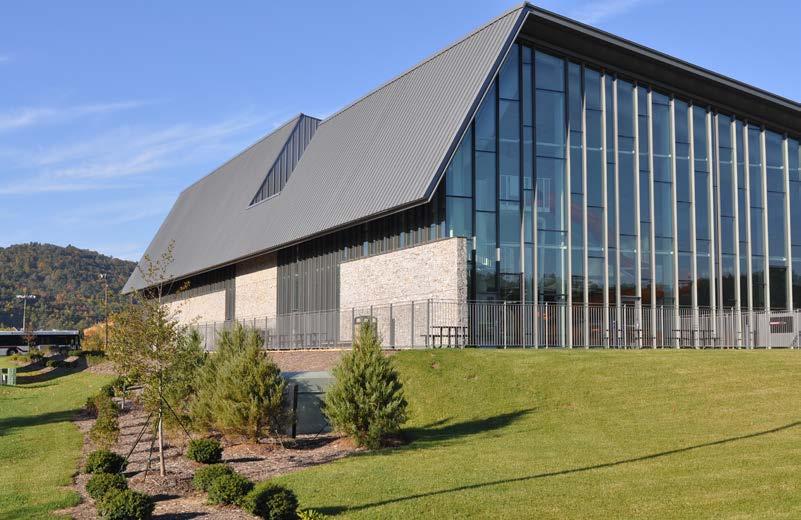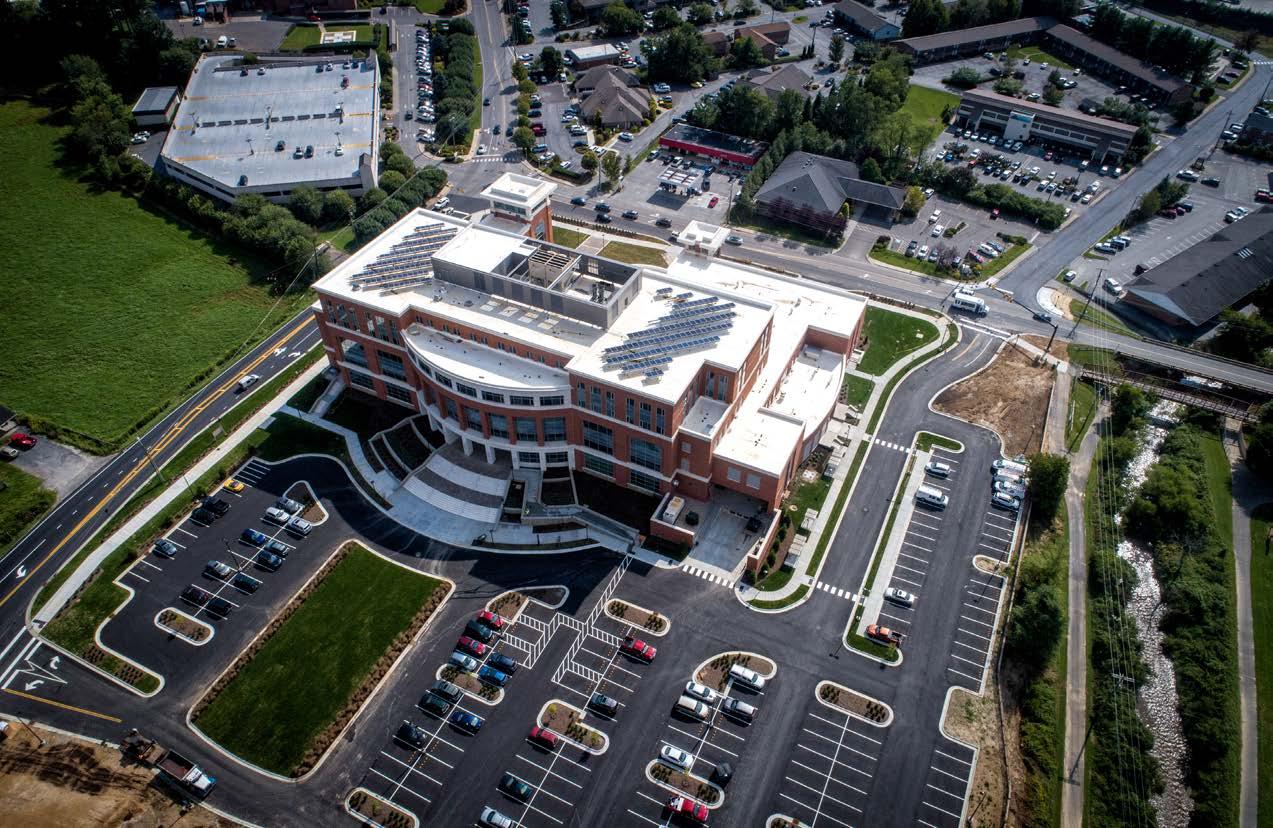PHOTO COURTESY APPALACHIAN STATE UNIVERSITY An early-summer view of Appalachian State’s east campus reveals grounds covered in green and blooming rhododendron.
Appalachian State University: College Town Living
A
BY ANNA OAKES
ppalachian State University — among the largest in the University of North Carolina system in terms of enrollment — provides both economic and quality of life benefits to area residents.
SMALL CLASSES, BIG IMPACT
Founded in 1899 as the Watauga Academy and later becoming the Appalachian State Teachers College, today, Appalachian State is one of the University of North Carolina system’s largest campuses, with a fall 2020 enrollment of 20,023. Its annual costs are $15,124 for in-state students, which includes tuition, fees, room and board and most textbooks. The student-to-faculty ratio is 16:1, while the average class size is 25. The institution is divided into seven undergraduate colleges and a graduate school, offering more than 150 undergraduate and graduate majors. ASU regularly places high in the U.S. News and World Report’s Best Colleges
24 | Boone My Hometown 2020-21
rankings. More than 134,000 Mountaineer alumni currently reside in all 50 states and several foreign countries.
AN ECONOMIC ENGINE
ASU is the largest employer in Watauga County, with 1,470 full- and part-time faculty and 1,876 full- and part-time staff in 2019. The campus is an economic engine for the county, region and the state. An analysis by Economic Modeling Specialists International concluded that in fiscal year 2012-13, the $355.3 million in payroll and operations spending of ASU, together with its construction spending and the spending of its students, visitors and alumni, created $1.7 billion in added state income. “This is equal to approximately 0.4 percent of the total gross state product of North Carolina and is equivalent to creating 28,035 new jobs,” the analysis stated. SEE ASU ON PAGE 26











